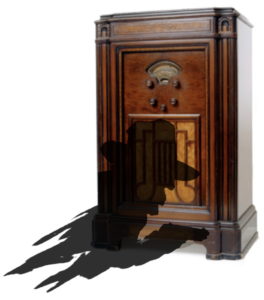 The version of The Shadow that radio listeners heard beginning in 1937 was designed specifically for the medium of radio. And it was a perfect fit. A crime fighter with the power to become invisible required no special effects other than what the individual mind could conjure.
The version of The Shadow that radio listeners heard beginning in 1937 was designed specifically for the medium of radio. And it was a perfect fit. A crime fighter with the power to become invisible required no special effects other than what the individual mind could conjure.
That version of The Shadow did not translate well to the screen, either large or small. There were a series of motion-picture shorts that featured an early radio version of The Shadow… where The Shadow was an unseen narrator of the stories. Four feature-length motion pictures were produced between 1937 and 1946, but they used a more pulp version of The Shadow. A 1940 movie serial used the same approach. It wasn’t until 1994 and the motion picture The Shadow, starring Alec Baldwin, that radio’s version of The Shadow appeared in movie theaters… and disappeared, using his power to cloud men’s minds.
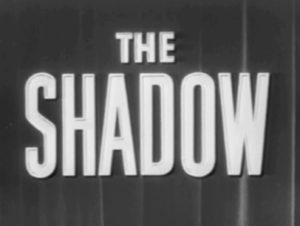
The Shadow never appeared regularly on the small screen, although it wasn’t for a lack of trying. In 1954, when the radio show was in its last season, Street & Smith, publishers of The Shadow magazine and copyright holder of the radio scripts, licensed a television pilot titled, simply, The Shadow. The idea was to syndicate the series, much like Flash Gordon, Sherlock Holmes, Boston Blackie and The Whistler. Unfortunately, The Shadow did not translate to TV as well as did some of it’s fellow radio programs, and the series remained unsold.
The 25-minute film has survived, and unfortunately it reveals a rather lackluster program. The standard radio opening, which explained who The Shadow was, was not replicated for television. Instead there were just brief opening credits. The wonderfully evocative theme from the radio show, Omphale’s Spinning Wheel, is nowhere to be heard.
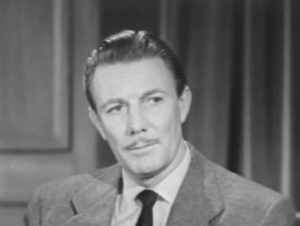
The teleplay was written by Peter Barry, a veteran scriptwriter for The Shadow radio program who wrote over 100 Shadow scripts. Starring as Lamont Cranston/The Shadow was Tom Helmore. Helmore appeared in over 30 motion pictures beginning in 1927 and did over 50 television shows, the last being a Night Gallery episode in 1972. Margo Lane was played by Paula Raymond, a leading woman in movies and television. She began as a child star in 1938’s Keep Smiling and worked in the trade until 1994.
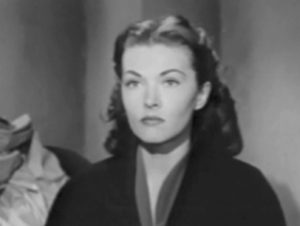
The title of the pilot episode was “The Case of the Kimono Killer” and was surprisingly un-Shadow-like. Most of the radio plays had some element of the weird or fantastic. The teleplay, however, was a standard murder mystery. The production was a low-budget, set-bound affair, and there were only three suspects. One was killed, and a second was accused. It was obvious that the real killer would turn out to be the only one left.
No special effects were used when Cranston became The Shadow. The person being questioned just spoke to an empty room. The Shadow’s voice carried a slight echo effect, but didn’t use the filter on the microphone that made The Shadow’s radio voice so recognizable. The only special effect was when The Shadow was beginning to clouding someone’s mind. A light appeared beside the person in question, and the actor appeared to lose mental focus for just a moment. That’s when The Shadow entered, unseen.
It was only in the last few seconds of the film that The Shadow finally speaks his famous line, as the killer is trapped: “Who knows what evil lurks in the hearts of men… The Shadow knows!”
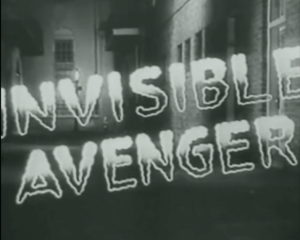
One failed pilot wasn’t enough, though. In 1958 another pilot was filmed for The Shadow. Several episodes were filmed but again the show didn’t go to series. Republic Pictures, the low-budget studio of many movie serials, produced this one. Republic, known for squeezing every last penny out of their productions, released this to movie theaters as a 60-minute feature titled Invisible Avenger, and again in 1962 retitled Bourbon Street Shadows.
This one had higher production values, and wasn’t bound to a stage set. It opened with the voice of The Shadow much like the radio series. Instead of organ music, though, viewers hear a gong being struck repeatedly in the background.
Lamont Cranston was played by Richard Derr, who had been around motion pictures studios since Charlie Chan in Rio in 1941. His final appearance was in an Automan television episode in 1983. Derr was a strange choice to play Cranston, because of his light hair. In all other incarnations of The Shadow, Cranston was dark haired. When The Shadow speaks, his voice is filtered a bit, similar to his radio voice.
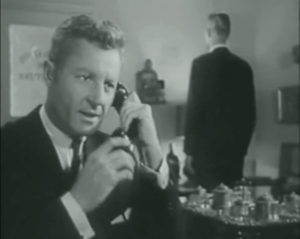
Margo Lane doesn’t appear in this film, although whether she would have appeared in later episodes, had they been made, will never be known for sure. Acting as Cranston’s aide in this story is Jogendra, master of mystic Oriental arts. The two exchange telepathic messages, and Jogendra hypnotizes others without effort.
The effect of The Shadow’s invisibility is handled differently in the first part of the film compared with the second. In the first part, which was directed by noted director James Wong Howe, The Shadow stands outside an open doorway, in his corporeal form. Only his shadow is seen inside the room. In the last part of the film, this one directed by lesser-known John Sledge, The Shadow is seen to disappear before the very eyes of a cheap thug. It’s a nice dissolve effect that’s used several times.
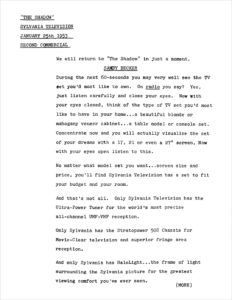
There was a third attempt to bring The Shadow to television in 1966, but this one didn’t even make it to film. It was announced in the trade publications, but never got past the initial stages.
As The Shadow radio program reached the end of its run, television began to have more and more effect upon it. Television was occasionally mentioned in the weekly radio episodes. And for a brief time in 1953, one of the sponsors was Sylvania television sets.
By the end of 1954, The Shadow finally surrendered to the power of television…. greater, perhaps, than even the power of The Shadow. Not that dramatic network radio had ended, no… it continued its decline for another eight years. But for radio’s The Shadow, television had won out.
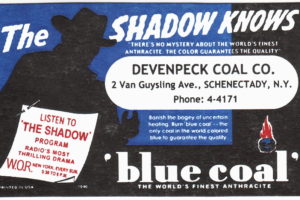
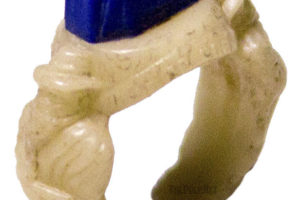
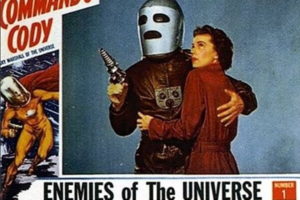
I have watched the Shadow series and have “Invisible Avenger/Bourbon Street Shadows” on DVD (still haven’t watched it). This is the first I’ve heard of the TV show episode. Have you actually seen the whole episode John? (Is it on youTube or something?)
Yes, I watched it… the entire 26 minutes… and lived to tell the tale. (shudder) It’s commonly available from PD DVD dealers and there are a couple copies of it on YouTube. I’d only recommend watching it if you have a half hour to kill… and I do mean KILL.
John
James Wong Howe was a famous cinematographer, not a director.
He did direct the first part of the movie/pilot, but yes, he was famous for his cinematography. Thanks for the clarification.
I’ve seen the 1954 unaired Shadow pilot identified as “The Case of the Cotton Kimono” in one reference tome…and spattered about the web. But you call it “The Case of the Kimono Killer.” The web is freakishly unreliable, and the reference tome may well have used the web as its source. Which one is correct?
The web is freakishly unreliable because of people like me who don’t double-check their facts. You are right. I was wrong. The announcer very clearly says “The Case of the Cotton Kimono.” Where I got my own version of the title, I have no idea. Yikes!
If it’s any consolation, I prefer your title. The actual title sounds like the episode should be set in a Japanese laundromat.
Why doesn’t a great producer like James Cameron or someone with his abilitys do a good movie on the shadow,the 90’s version was alright ,it could have some inprovements like forget the other version and use the book version like Batman it could be a hit. After all who would have thought wonder women would be so good ,if Hollywood would want it it could happen.
I think a TV series could be better than even a movie. More room for The Shadow’s background. Different episodes could feature different agents. Different villains! Ten hour-long episodes could weave a better tapestry of The Shadow than a two-hour movie could. Netflix? Amazon? Hulu? HBO? Where are you?